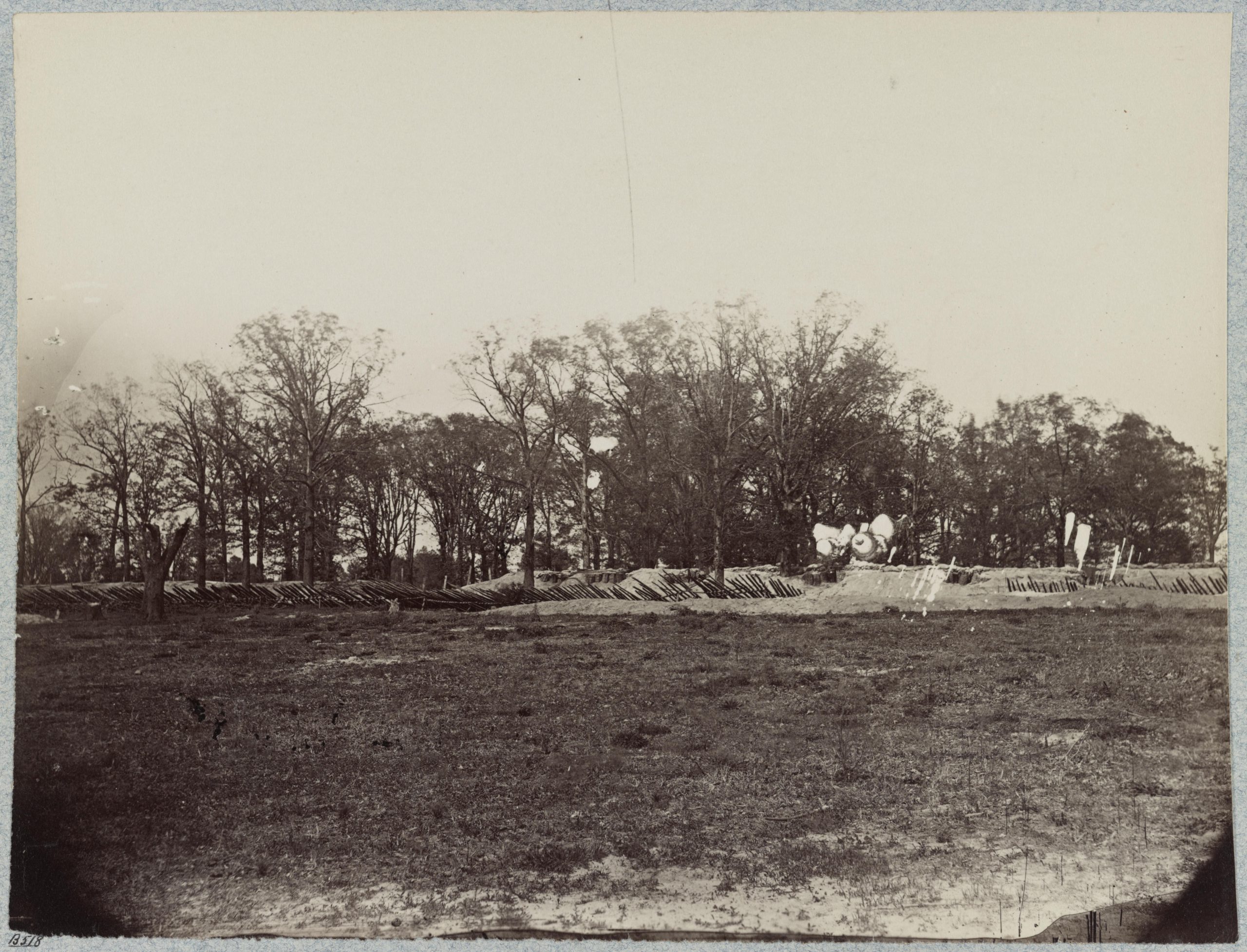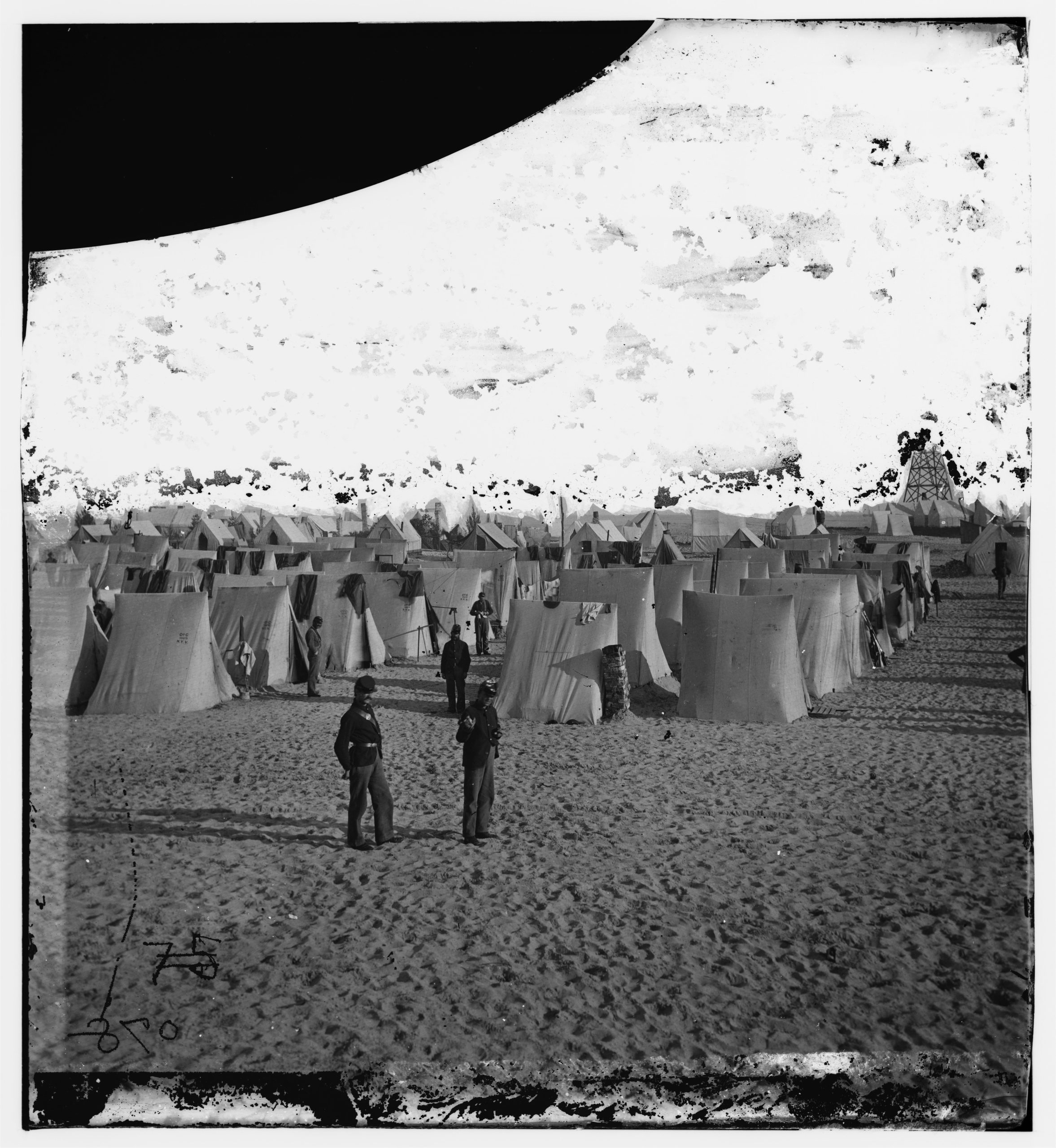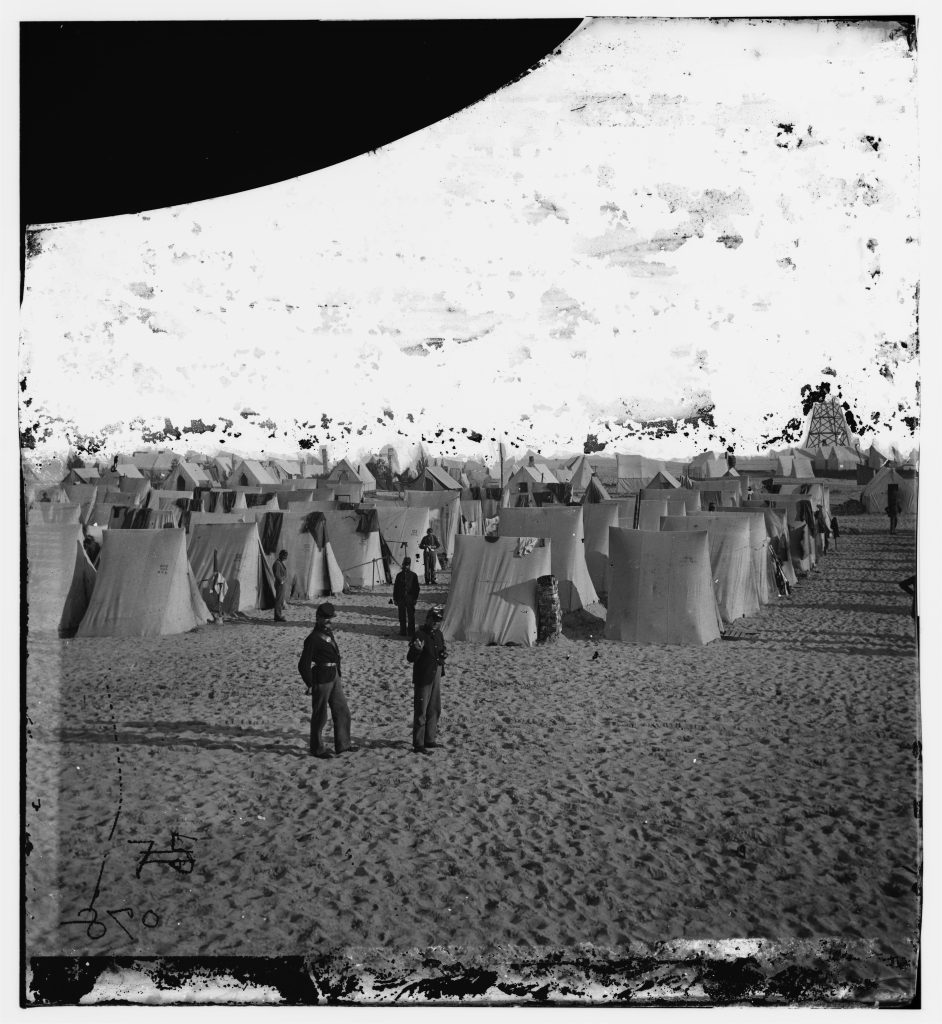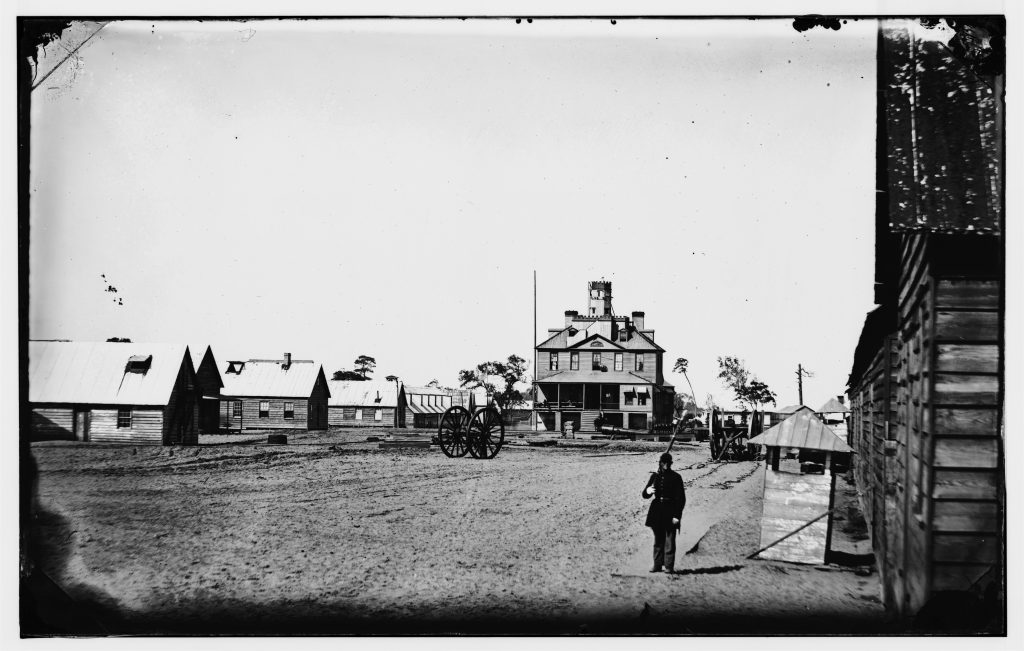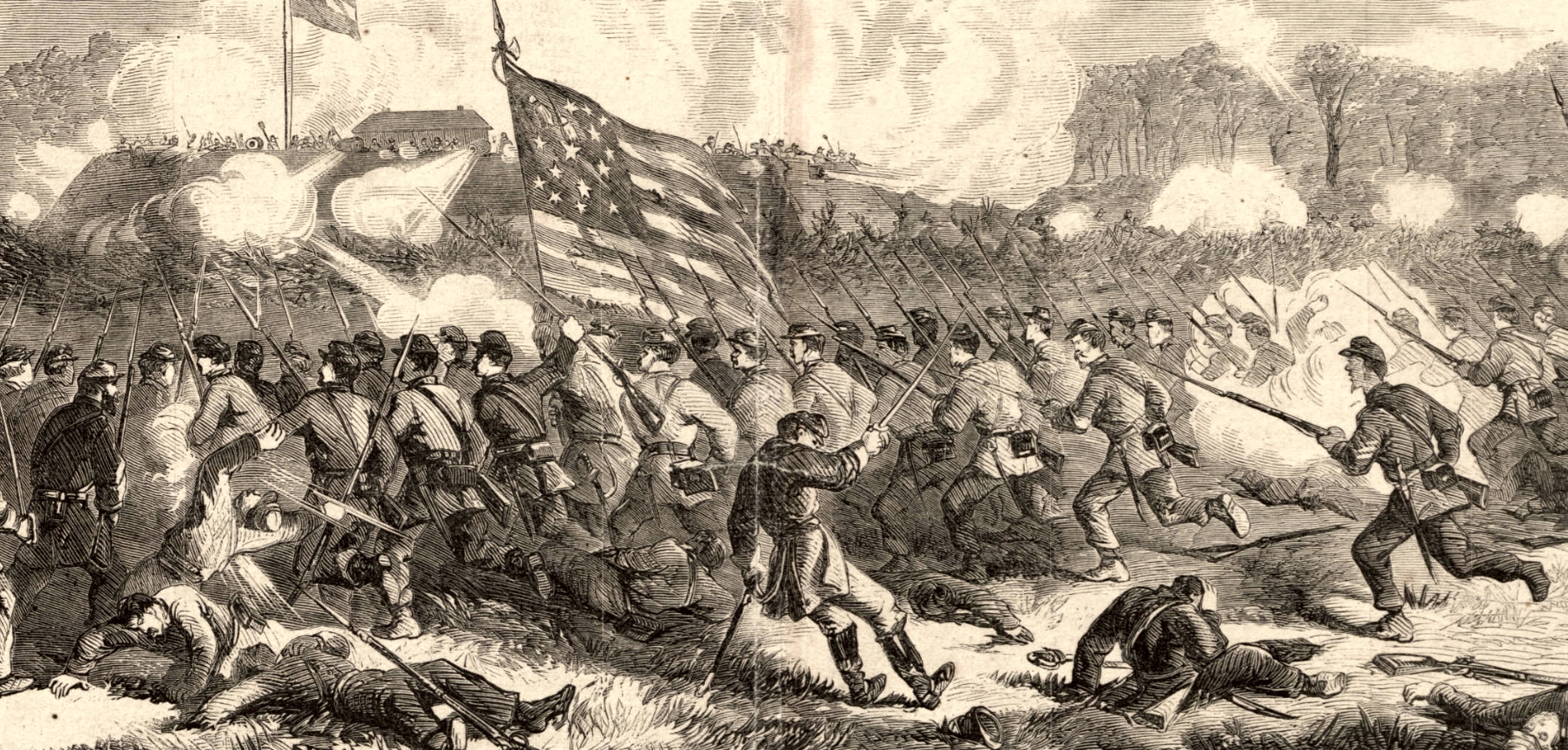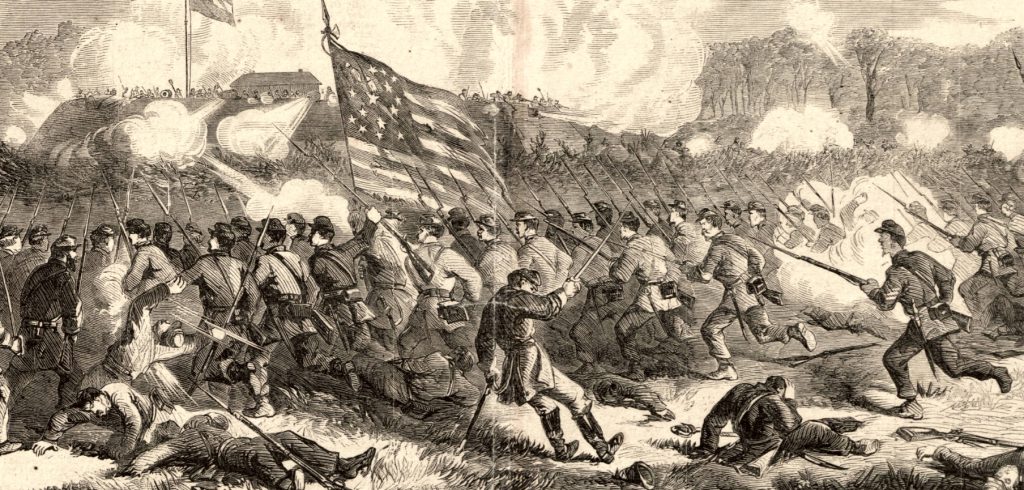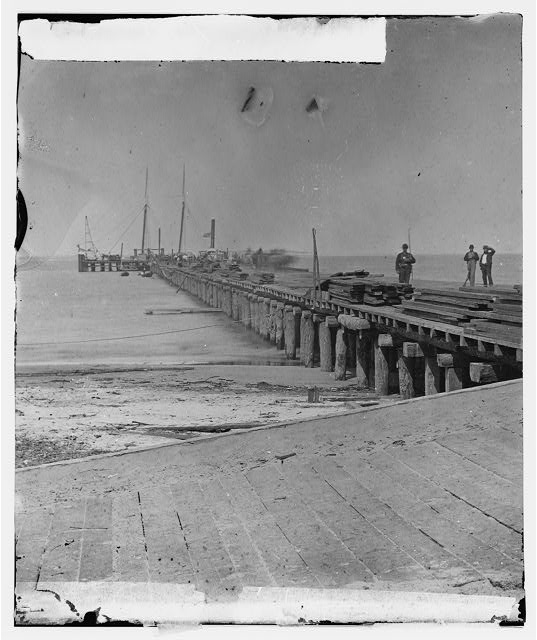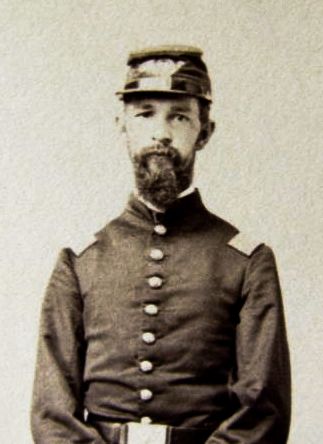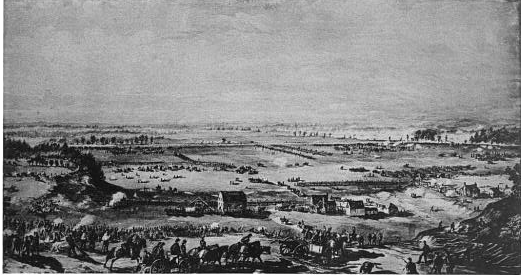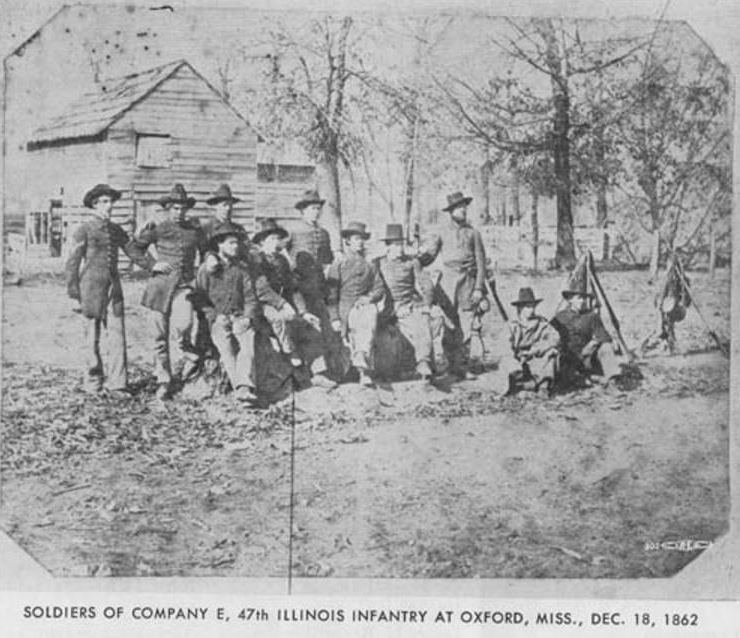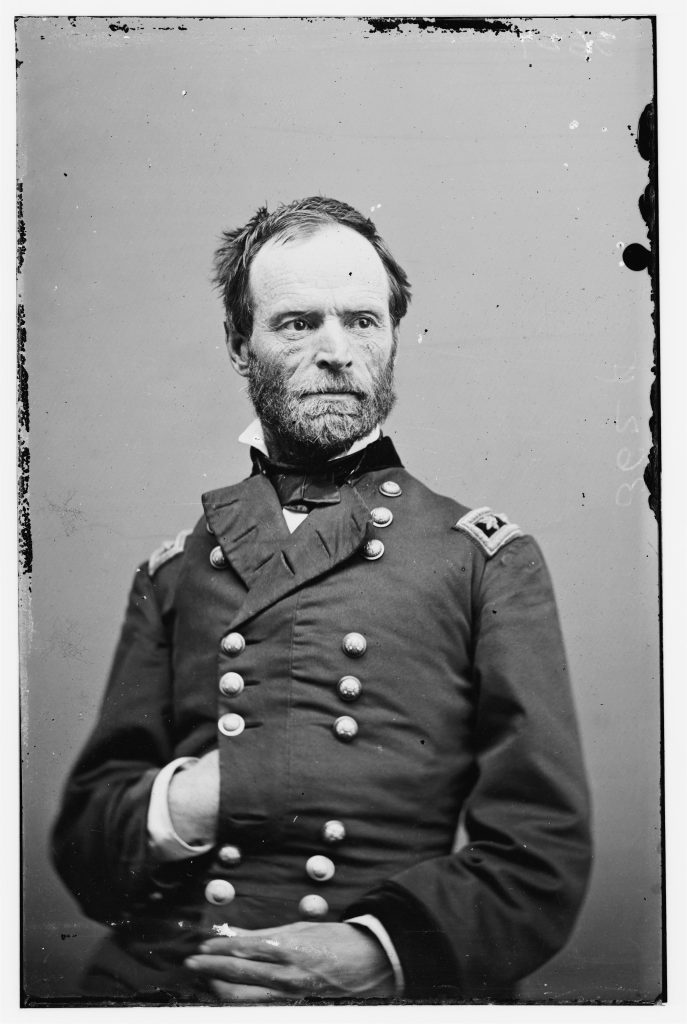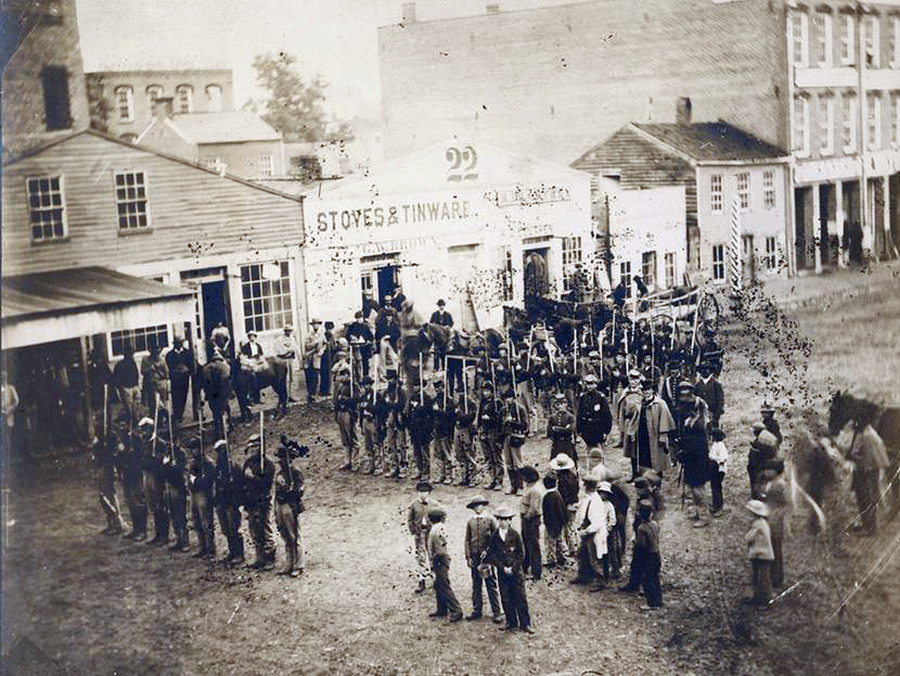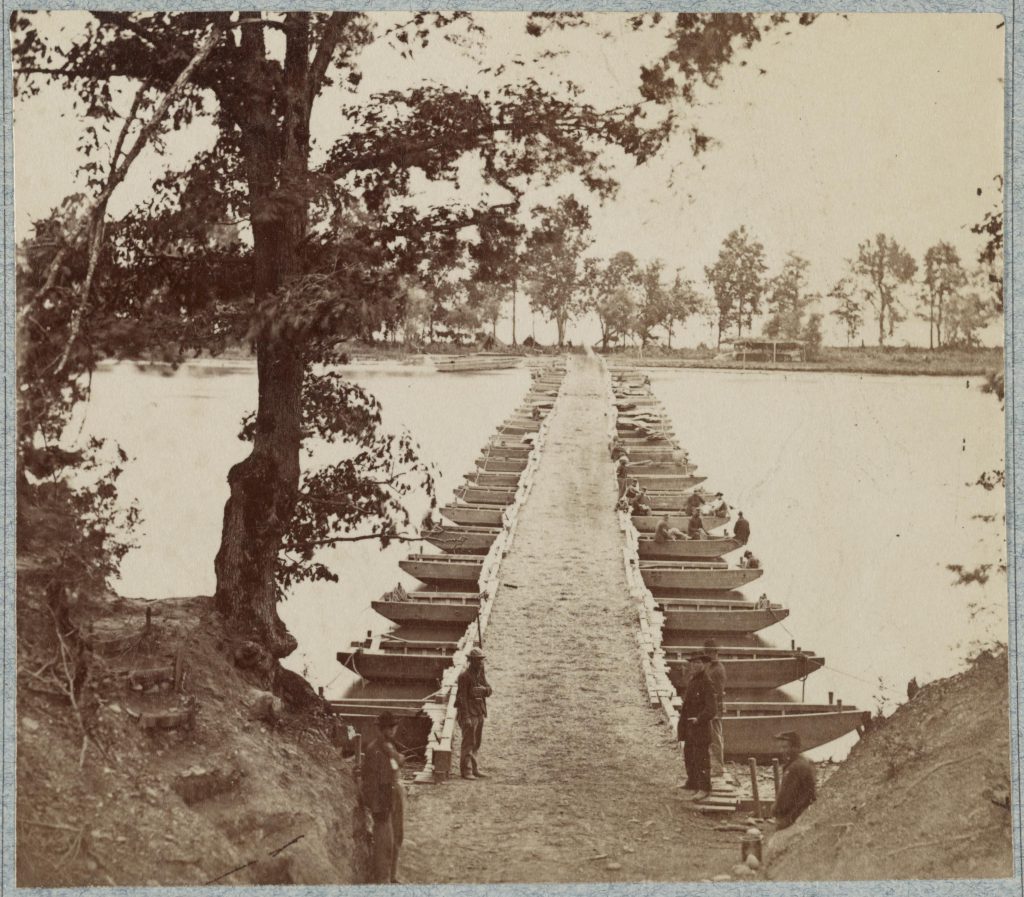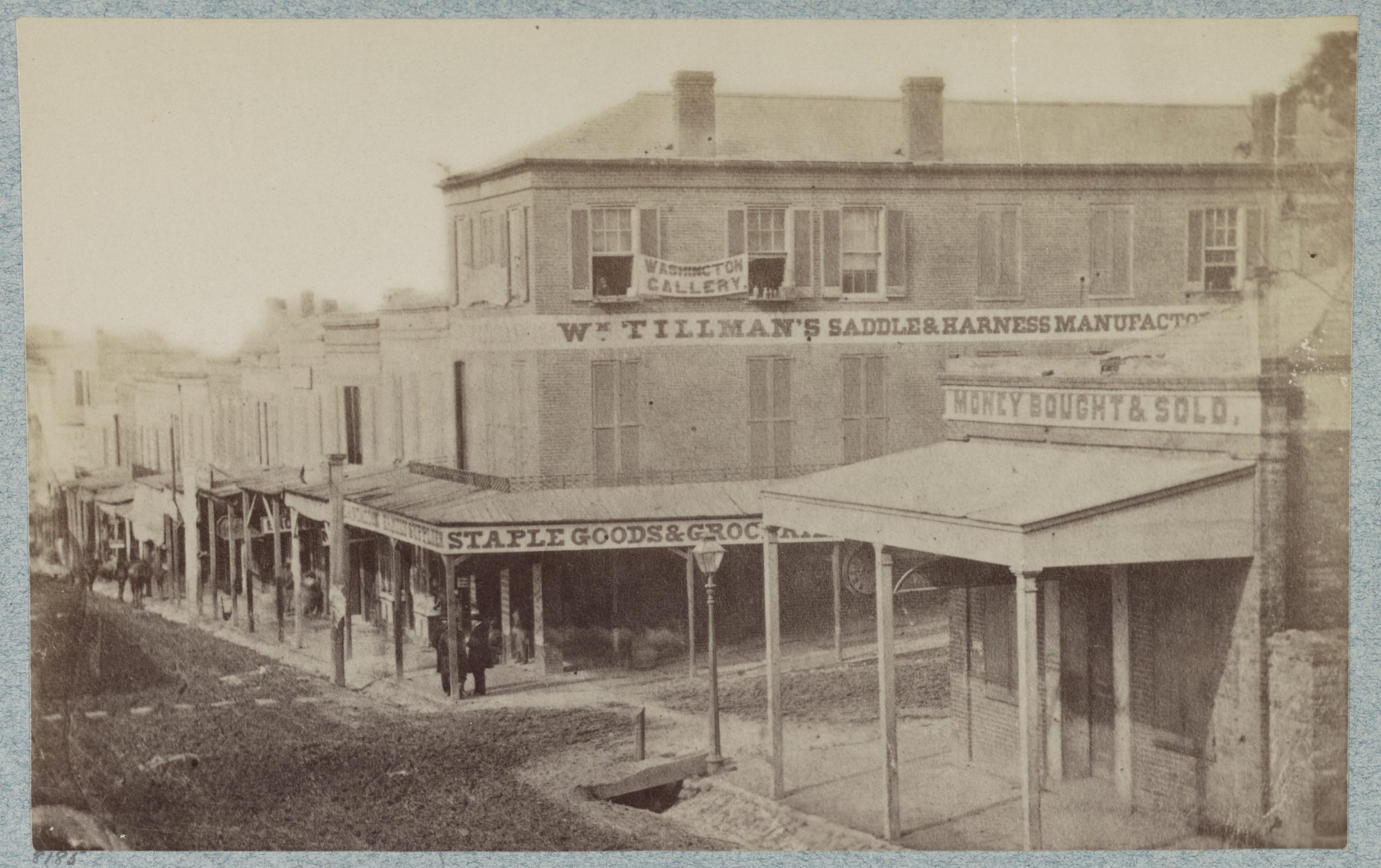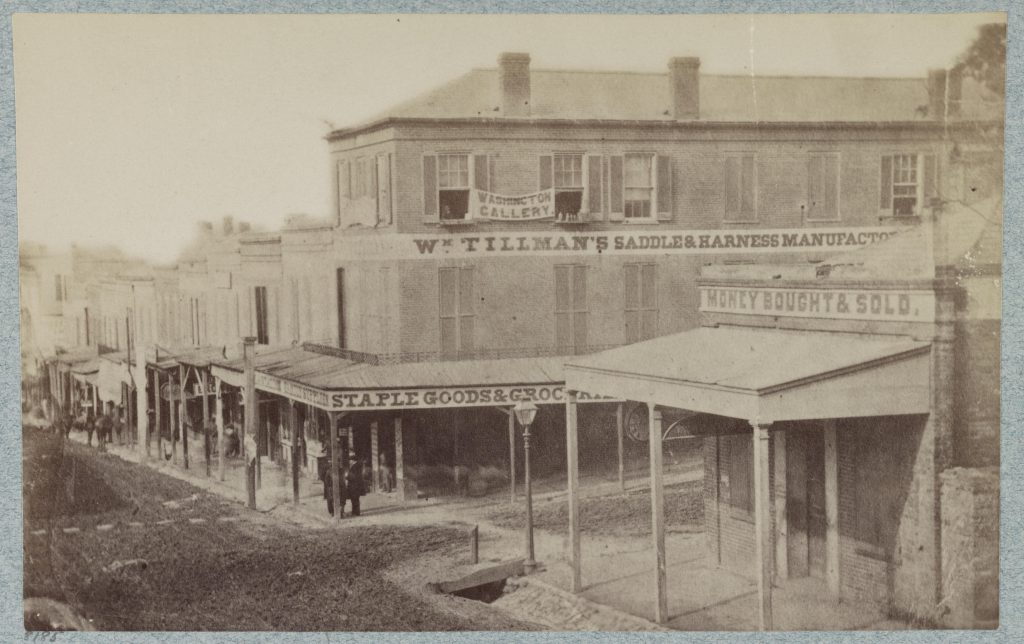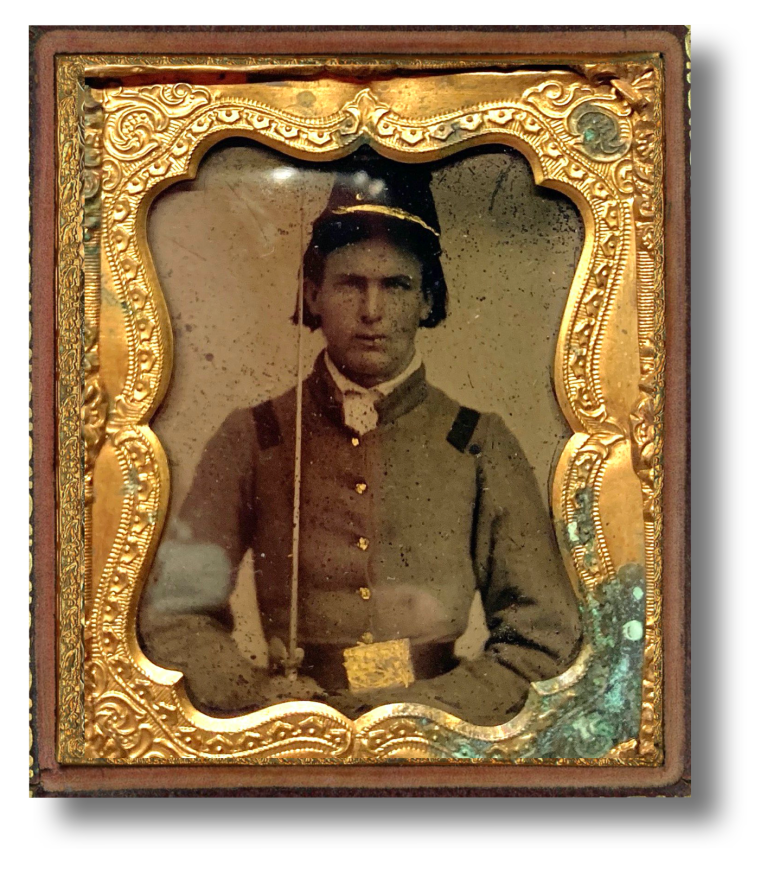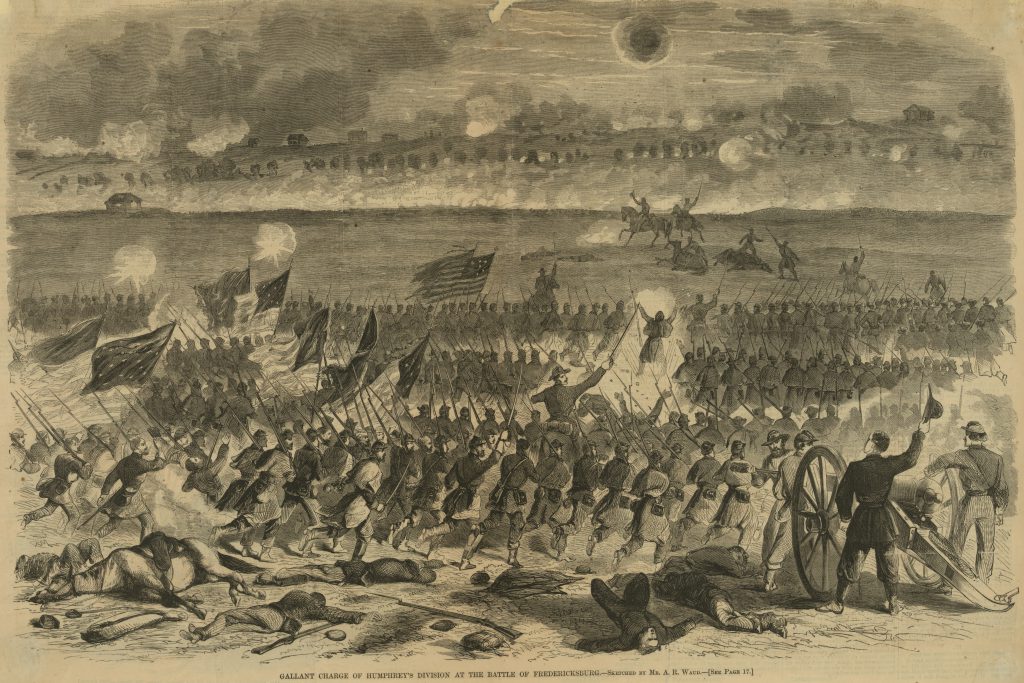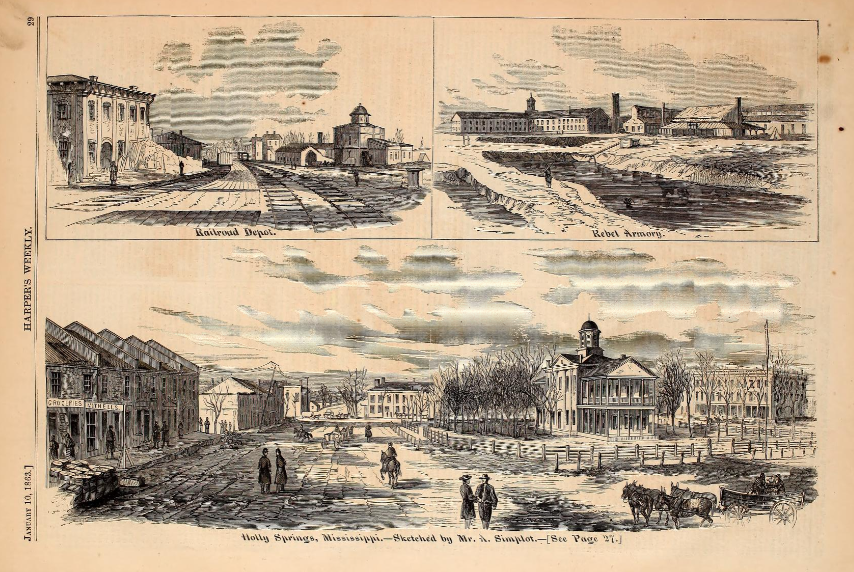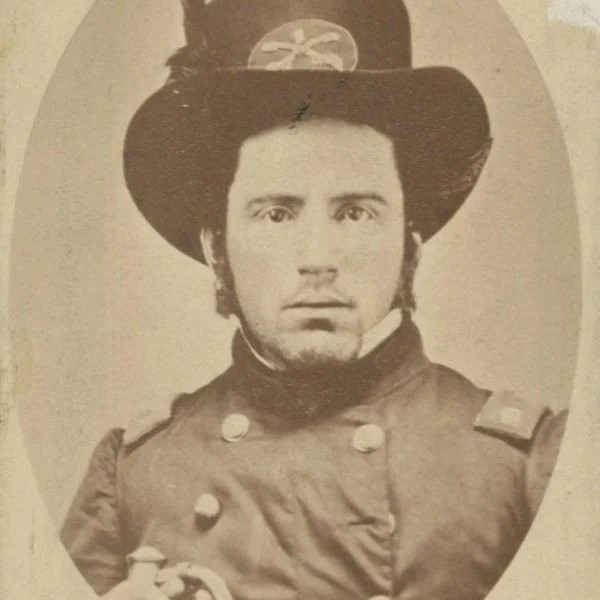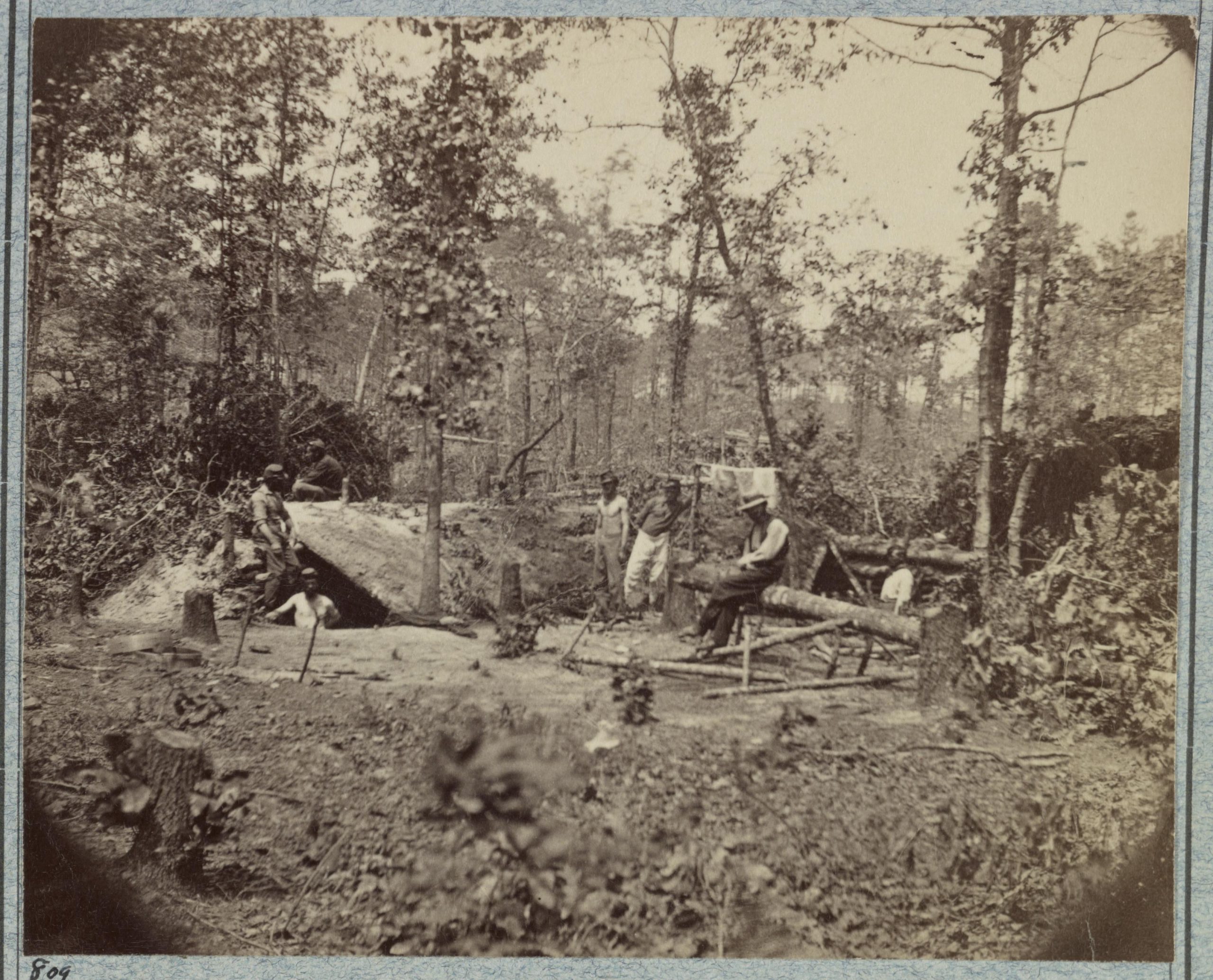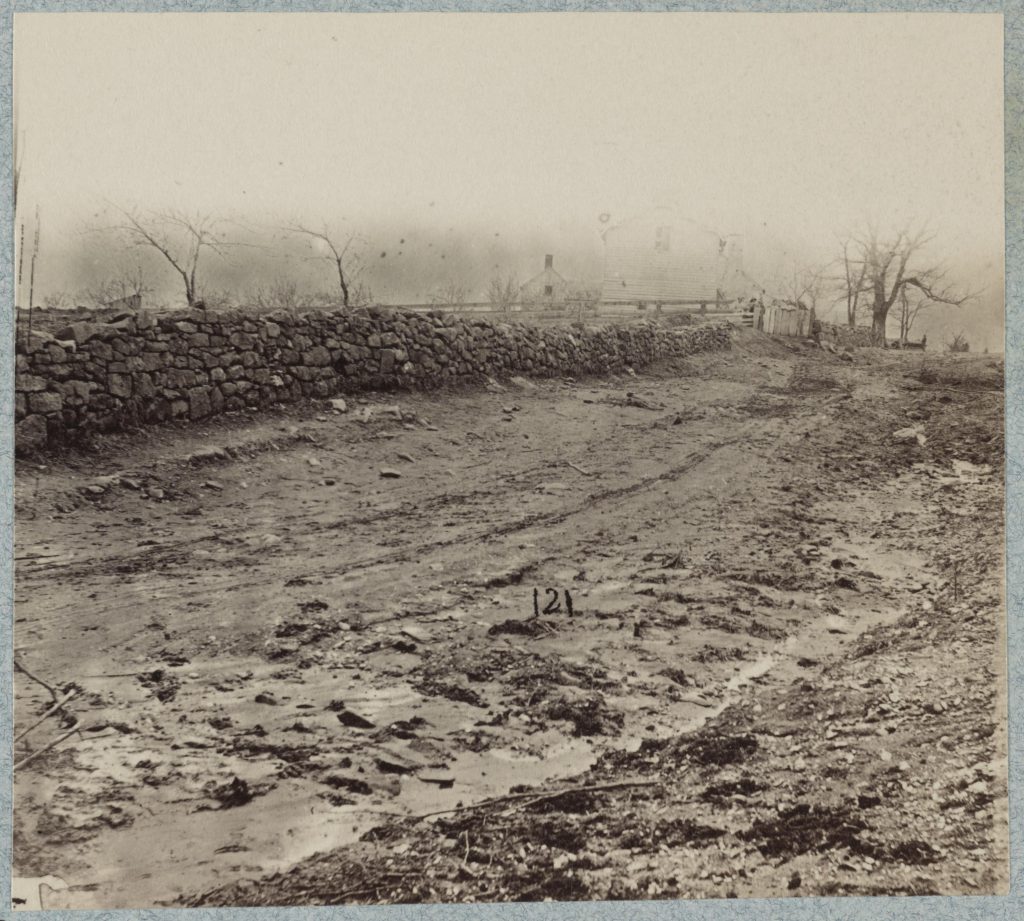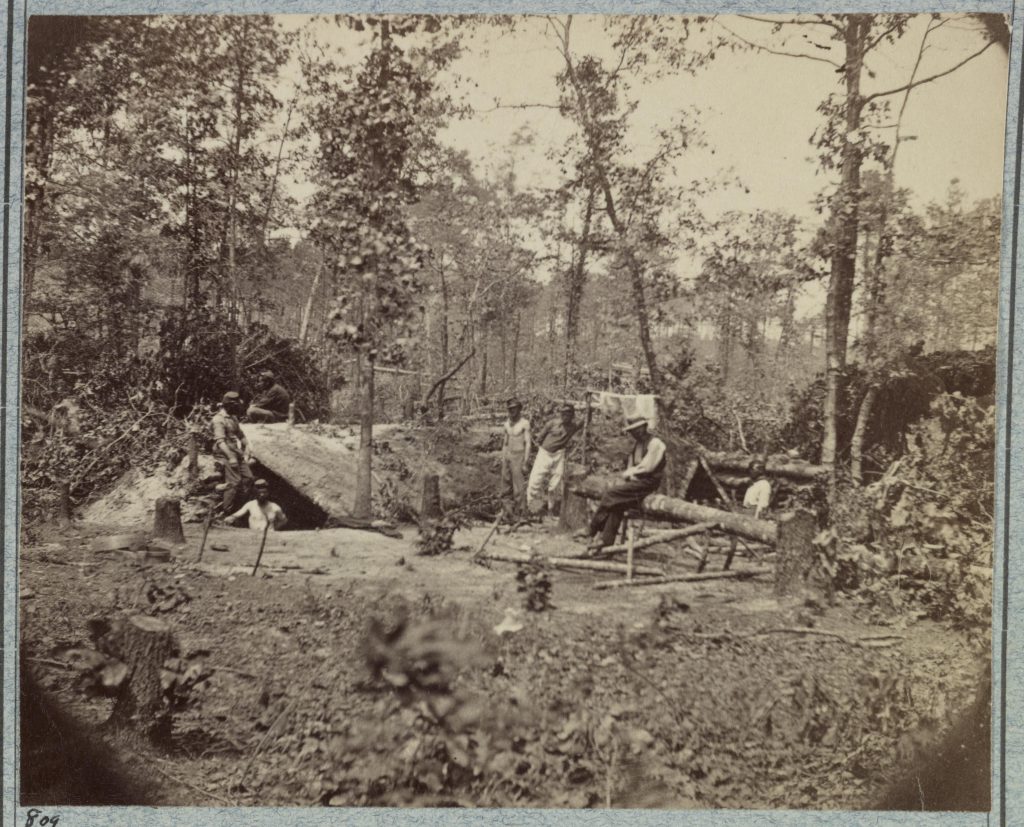Benjamin Hulburd was born in 1822 in Waterville, Vermont. He was 40 years old when he first enlisted in the 7th Vermont Infantry in 1862. He was discharged for disability after about a year of service. Not letting that stop him, he then enlisted in the 2nd Vermont Infantry in late 1863 to serve alongside his brother, Daniel Hulburd, and his nephew, Loyal Hulburd.
The Research Arsenal collection contains letters written by Benjamin Hulburd during his time in the 7th Vermont Infantry as well as the 2nd Vermont Infantry, but for the purposes of this spotlight we will focus on his time with the 2nd Vermont Infantry.
All of the letters in the collection were written by Benjamin Hulburd to his wife, Juliana (Miller) Hulburd and their children.
The 2nd Vermont Infantry at Petersburg
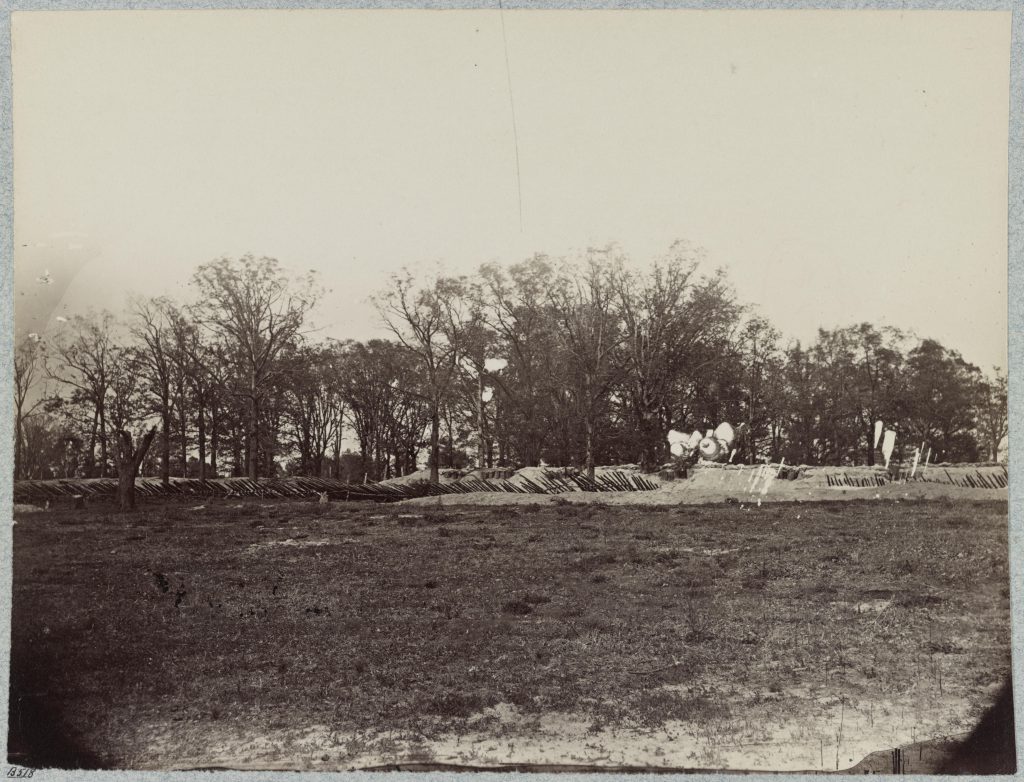
On June 24, 1864, Benjamin Hulbard wrote to his wife from outside Petersburg. He detailed a recent fight where the various Vermont regiments took heavy losses.
“We left the place we were in when Loyal left Tuesday night, marched all night. Did not get more than 8 miles. Came to this place — a point on the railroad — formed our lines, sent out pickets, skirmishers, & pioneers who destroyed about 2 miles of railroad, who were driven back — all that were not killed or taken prisoners. We threw up breastworks in about 15 minutes, planted ourselves behind them expecting an immediate charge upon us as our picket said the rebs had strong skirmish lines & 2 or 3 lines of battle. We lay waiting to pay them off when they presented the charge but it seems they fell back after taking a host of prisoners. We lay till about 10 o’clock, then all left & fell back perhaps a mile & a half or two miles. What our next move will be, I of course can’t tell. On the whole, I call it a hard blow for us but still I don’t know but good will come out of it as a large force of the enemy must have come here & I don’t know but what those of our left where we came from have taken the advantage of the time & attacked Petersburg. I can not particularize — only we have had smart fighting here — gained nothing — lost heavily.
Now for the rumors of the morning. In the first place, probabilities. The 4th Vermont Regiment was out on skirmish line — not more than ¼ come in — the rest prisoners. About ½ of the 11th Vermont out but very few returned as yet. There is but little doubt but what Nathan is prisoner as his company was out & as yet none come in. I understand that about 8 companies of 11 was detailed & went out. I saw [Albert J.] Bedell of Nathan’s company. He tells me this. He was cooking for the company & did not go out. They may come in yet or some of them as they are scattering in to the 4th some this morning, but a large number — probably all — on the way to Richmond or will be soon. Tell George that it may all come out right with Nathan yet.
There is something going on to our right this morning — probably near Petersburg — as there is heavy cannonading in that direction. Would you like to know how I feel when I am in a fight or expect to go in? Well a fellow don’t have any particular. I sit or lie & chew tobacco if I have it. I always dread a skirmish line the worst. In that case, a line of men are sent way out in the front to see what is there with nothing to protect them — only their guns. They are placed about 5 or 6 paces apart, advance cautiously &c. Loyal will tell you all about it as I find I am using up paper & writing nothing.”
The “Nathan” mentioned as being taken prisoner was Benjamin Hulburd’s nephew, Nathan C. Hulburd of the 1st Vermont Heavy Artillery.
A few days later, on June 27, 1864, Benjamin Hulburd wrote again to his wife, telling her that things had settled down for the moment, at least for the 2nd Vermont Infantry.
“We, Vermont 2d, have been in this place now this is the fourth day without being called upon for anything. The 2nd, 5th, & 11th Vermont are here together with the other regiments composing the 2nd Division of the 6th Corps behind good fortifications with our tents up for a shade having a good rest, altho it seems there is constant fighting on our right — probably in the vicinity of Petersburg I should think by the sound of the cannonading.”
Benjamin Hulburd also worried for his nephew.
“I feel sorry about Nathan but guess he will stand captivity as well as most anyone for camp life agreed with him. I don’t know as I ever see him look tougher than now. I expect Ed Page is gone up too.”
Benjamin Hulburd and the 2nd Vermont Infantry go to Washington
In July, 1864, Benjamin Hulburd and the 2nd Vermont Infantry were brought urgently to Washington, D.C. to shore up against a Confederate attack. On July 12, 1864, Benjamin Hulburd wrote a letter home detailing the rapid movement.
“Well Juliana, I am here now 150 miles, or such a matter, from where I was 2 days ago. Got here last night by steamer from City Point — 9 miles from Petersburg. March to City Point Saturday night, took steamer 4 P.M. & got here 4 P.M. yesterday. All excitement — skirmishing within 6 miles of [Washington] City. In 5 days the rebs got nearer Washington than our men have to Richmond in 3 years. Guess we can hold them. Can’t tell how much force we have. 6th Corps came from Petersburg…
…I understand the rebs made a charge on the fort where Nathan was last winter yesterday. Thousand stories — don’t know what to believe. Only know that skirmishing is going on now for I can see it & occasionally our men from the forts around throw shells to the rebs.”
In August, 1864, the 2nd Vermont Infantry was camped near Harper’s Ferry. Benjamin Hulburd hoped that he would be able to return to Vermont on recruiting duty, but the chances were slim.
“It has been awful hot here this summer and not scarcely any rain. I asked a favor of our Capt. yesterday which he said he would try to help me to but I think it rather doubtful about my having it granted — viz: If there were any details from this company to go to Vermont on recruiting service this fall, that I might be favorably remembered but it will probably be given to someone longer in the regiment.”
Even though Benjamin Hulburd’s morale was failing, he tried his best to remember that things could be worse.
“Well, at present I can’t tell anything about our present or future prospects. I am almost discouraged, but yet I do not complain. I am better off than thousands and of course am thankful. I suppose we ( the 6th Corps) are here now to keep the Rebs out of Harpers Ferry — but after we hear that they have crossed the river below us and gone into Maryland and Pennsylvania and burned some few villages, we may have orders to hurry down and prevent it.”
Continued Skirmishes and Battles
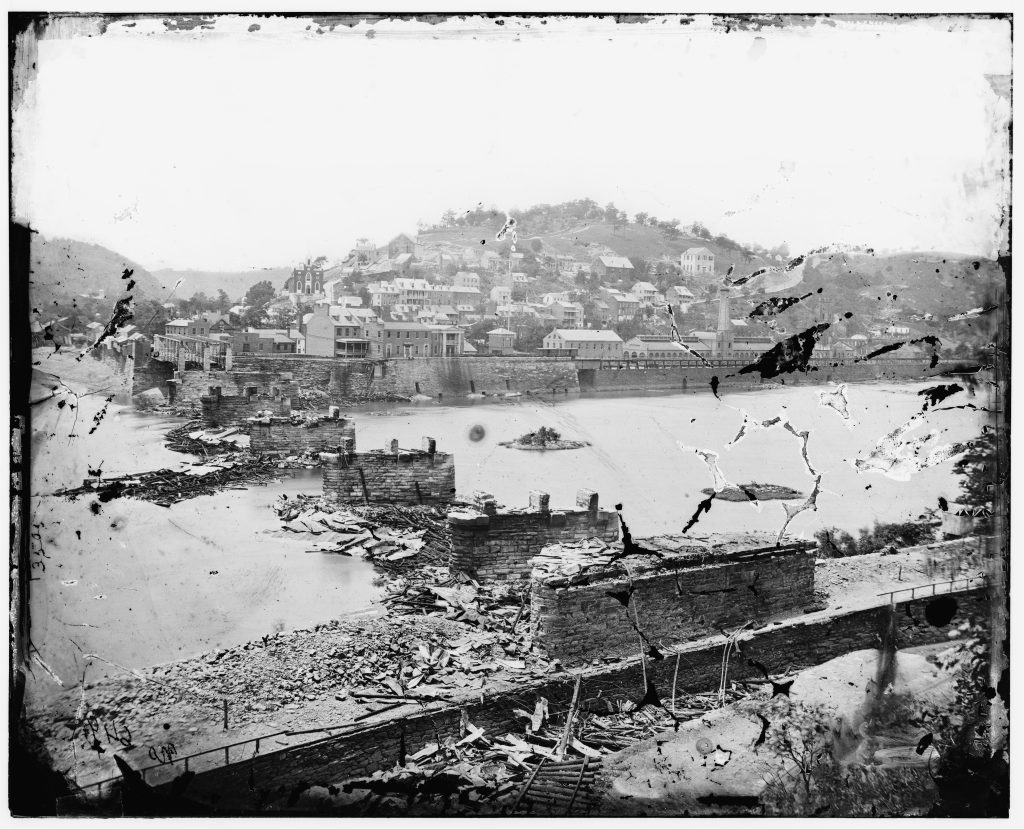
On August 22, 1864, Benjamin Hulburd wrote home about another recent skirmish the 2nd Vermont Infantry found themselves in.
“Yesterday (Sunday) morning about 9 o’clock, the rebs attacked our picket line. The Old Vermont Brigade was immediately sent to the front to skirmish. We moved forward at a double quick [and] got our position. Altho our pickets had been driven back a little from their lines, you must judge whether I worked any or not. I stood in my tracks & loaded & fired 185 shots without stopping but a few minutes once or twice when I waited for cartridges. It is said that our brigade lost in killed & wounded about 250. I should think that was a rather high figure but it is possible. Tell Loyal that Sgt. [James C.] Hutchinson was shot dead & Linus Loveland lost an arm. That was all the casualties in Company H.”
Benjamin’s final letter in our collection was written on September 7, 1864 while he and the 2nd Vermont Infantry were outside of Charleston, West Virginia.
“We are “lying in wait” at present. Our object chiefly, I think, to hold the rebs here but they are dodging about us on the alert.
We are now some 10 miles from Charlestown. Moved here the 2nd inst., called up Sunday night at midnight, packed up, started off, went about a mile, halted, threw up a line of breastworks, got them finished at daylight, then had to give them up to another division of the boys & we went back to where we started from, put up our tents again, & are here yet. When we shall move again, can’t tell. May have orders to move in an hour.”
Sadly, Benjamin Hulburd was killed at the Battle of Cedar Creek a little over a month after this letter was written. His brother and his nephew, Loyal, serving alongside him in the 2nd Vermont Infantry both survived, but his nephew Nathan Hulburd who was captured in battle died at Andersonville.
We’d like to give a special thanks to William Griffing of Spared & Shared for transcribing and sharing these letters.
To read more of Benjamin Hulburd’s letters and access thousands of other Civil War letters and documents, sign up for a Research Arsenal membership.
If you enjoyed this article, check out some of our other featured collections like Samuel Huntingdon of the 100th New York Infantry and Amasa Hammond of the 3rd Rhode Island Heavy Artillery.

